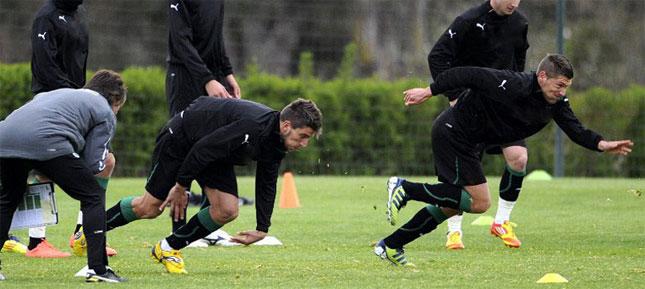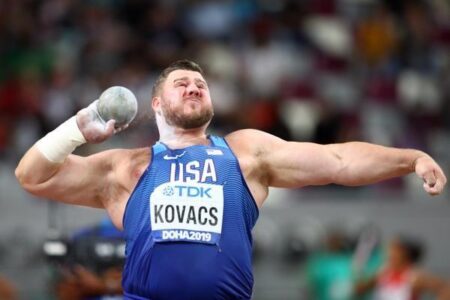International field hockey players may soon have a new edge in their training regimens thanks to cutting-edge research on in-season repeated-sprint training conducted in hypoxic conditions. A recent study published in Frontiers explores how simulating high-altitude environments during intense sprint workouts can enhance athletic performance, endurance, and recovery in elite athletes competing at the highest level. As teams seek innovative methods to gain a competitive advantage during the grueling competitive season, hypoxia-based training protocols are emerging as a promising tool to boost speed, stamina, and overall game readiness. This article delves into the findings, implications, and potential of this novel approach within the fast-paced world of international field hockey.
In-Season Hypoxic Training Boosts Sprint Performance in Elite Field Hockey
Elite field hockey players who engaged in repeated-sprint training under hypoxic conditions during their competitive season experienced significant improvements in their sprinting capacity. This cutting-edge approach exploits reduced oxygen availability to amplify physiological adaptations, enhancing muscle fatigue resistance and accelerating recovery between high-intensity efforts. Athletes reported improved on-field explosiveness, confirmed by objective metrics measuring sprint times and power output. Such training capitalizes on *natural stressors* that stimulate oxygen transport mechanisms and mitochondrial efficiency.
Key benefits highlighted in the study include:
- Enhanced repeated-sprint ability after hypoxic sessions compared to normoxic training
- Improved blood oxygen saturation and aerobic energy contribution during sprints
- Better maintenance of peak velocity over multiple sprints
| Training Condition | Sprint Time Improvement (%) | Recovery Rate Enhancement (%) |
|---|---|---|
| Hypoxic Repeated-Sprint | 5.3 | 18.7 |
| Normoxic Repeated-Sprint | 2.1 | 8.4 |
Maximizing Recovery and Adaptation During Repeated-Sprint Sessions
Optimizing the intervals between sprints is crucial to enhance both recovery and performance in congested in-season schedules. Research indicates that carefully calibrated rest durations-typically between 15 to 30 seconds-can facilitate better phosphocreatine resynthesis and maintain neuromuscular efficiency throughout repeated-sprint sessions. Integrating active recovery methods, such as low-intensity cycling or dynamic stretching, further accelerates metabolite clearance and reduces fatigue. Athletes training in hypoxic conditions benefit particularly from these strategies, as oxygen availability is limited, making efficient recovery even more vital to sustain output across bouts.
Key recovery strategies include:
- Implementing interval manipulation to balance effort and rest phases
- Incorporating active recovery techniques to enhance blood flow
- Employing tailored nutritional interventions focusing on glycogen replenishment
- Including breathing exercises to maximize oxygen uptake in hypoxia
| Recovery Method | Benefit |
|---|---|
| Active Recovery | Improves lactate clearance |
| Interval Rest (20s) | Maintains sprint power |
| Hypoxic Breathing | Enhances oxygen efficiency |
| Nutrition Timing | Supports glycogen restoration |
Practical Guidelines for Implementing Hypoxia Protocols in Competitive Schedules
Successfully integrating hypoxia protocols into an already demanding competitive calendar requires meticulous planning. Coaches must prioritize optimal timing of hypoxic sessions to avoid interference with peak performance demands. Typically, scheduling repeated-sprint training under hypoxia during recovery days or early in the microcycle allows athletes to harness physiological adaptations without compromising match readiness. Monitoring fatigue levels and subjective wellness scores is crucial to adjust training loads dynamically and prevent overtraining. Additionally, maintaining strong communication channels between medical staff, conditioning coaches, and technical teams ensures a holistic approach that centers on athlete health and performance.
Practical execution also hinges on resource availability and technological support. Portable hypoxic devices that simulate low-oxygen environments can be deployed with minimal disruption across training sites, making them ideal for international squads on the move. Incorporating hypoxic protocols within the training week might follow this structure:
- Day 1: High-intensity repeated sprints in hypoxia (15-20 min)
- Day 2: Low-intensity active recovery or tactical training
- Day 3: Standard aerobic or technical work at normoxia
| Parameter | Recommended Range | Notes |
|---|---|---|
| Simulated Altitude | 2,000 – 3,000 m | Optimal balance between stress and recovery |
| Session Duration | 15 – 20 min | Focus on repeated sprints with short rests |
| Frequency per Week | 1 – 2 sessions | Prevents excessive fatigue accumulation |
By adapting this blueprint to the individual athlete’s condition and the team’s competition calendar, coaching staff can maximize the benefits of hypoxia training while safeguarding performance integrity on match days.
In Retrospect
In summary, the recent study on in-season repeated-sprint training in hypoxia highlights promising advancements for international field hockey players seeking to enhance their performance. By integrating controlled low-oxygen environments into training regimens, athletes may improve their sprint capacity and endurance without compromising recovery during the competitive season. As teams and coaches continue to explore innovative methods to gain an edge, hypoxic training stands out as a compelling option worth further investigation. This research not only expands our understanding of athletic conditioning but also points toward new frontiers in sports science aimed at optimizing elite performance on the field.





